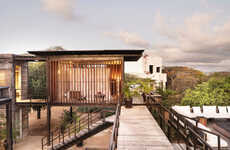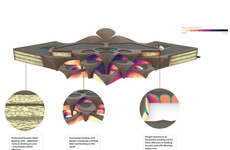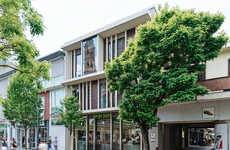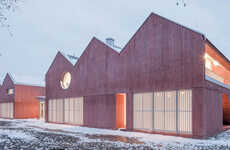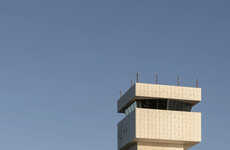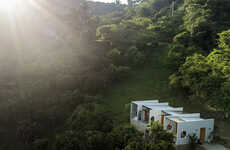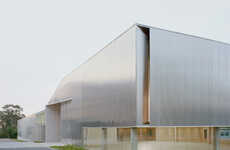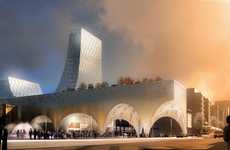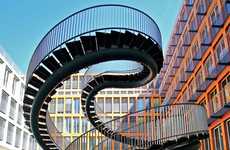
The PAEA by Stefan Ritter Exudes Authority in Austria
Amelia Roblin — September 6, 2011 — Eco
References: stefanritter & suckerpunchdaily
Any organization with a headquarters like this is sure to attract attention, but surprisingly, the Pan-African Energy Agency (PAEA) by Stefan Ritter has much more humble intentions than it appears.
It's a very good thing that such a monumental building as this makes an attempt to function passively. A thermal roof keeps the cavernous spaces cool in the summer and warm in the winter, preventing the outdoor temperatures from penetrating and harnessing the strength of the sun where possible. Pipes throughout the glass latticework skin are warmed by its rays, feeding heat into the building where necessary.
The complex architectural composition is an interesting exploration of subdividing masses. While the overall impression of the PAEA by Stefan Ritter is one of epic proportions, the public and private program is pieced apart in separate structural shards.
It's a very good thing that such a monumental building as this makes an attempt to function passively. A thermal roof keeps the cavernous spaces cool in the summer and warm in the winter, preventing the outdoor temperatures from penetrating and harnessing the strength of the sun where possible. Pipes throughout the glass latticework skin are warmed by its rays, feeding heat into the building where necessary.
The complex architectural composition is an interesting exploration of subdividing masses. While the overall impression of the PAEA by Stefan Ritter is one of epic proportions, the public and private program is pieced apart in separate structural shards.
Trend Themes
1. Sustainable Architecture - The PAEA's passive design and use of thermal roof and glass latticework skin showcase the trend towards sustainable architecture.
2. Renewable Energy Integration - The PAEA's ability to harness the sun's rays for heating the building highlights the trend of incorporating renewable energy sources into architectural design.
3. Modular Construction - The subdivided masses of the PAEA's architectural composition reflect the trend of utilizing modular construction techniques for flexible and adaptable buildings.
Industry Implications
1. Green Building - The PAEA's sustainable features offer innovative opportunities for companies in the green building industry to create more energy-efficient structures.
2. Renewable Energy - The integration of solar energy in the PAEA presents disruptive innovation opportunities for the renewable energy sector to collaborate with architects and developers.
3. Construction Technology - The use of modular construction in the PAEA opens up possibilities for advancements in construction technology and modular building systems.
5.3
Score
Popularity
Activity
Freshness

